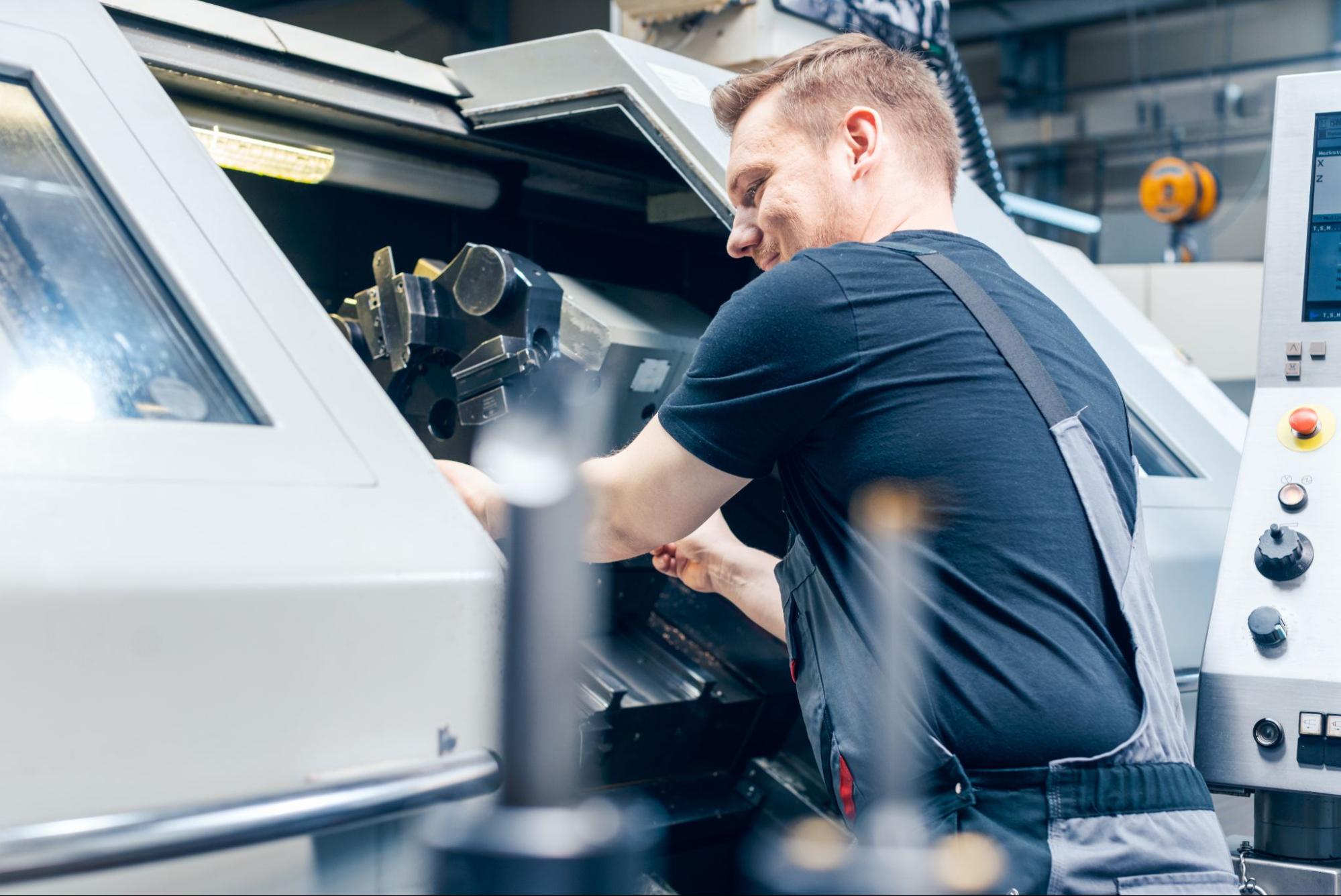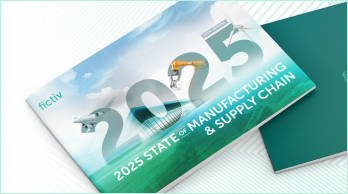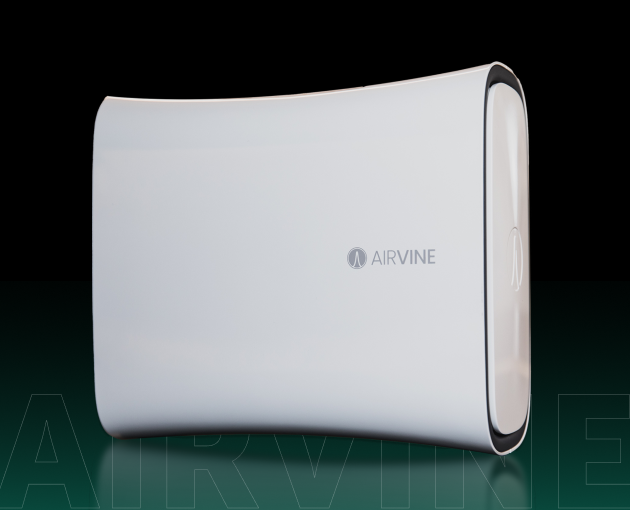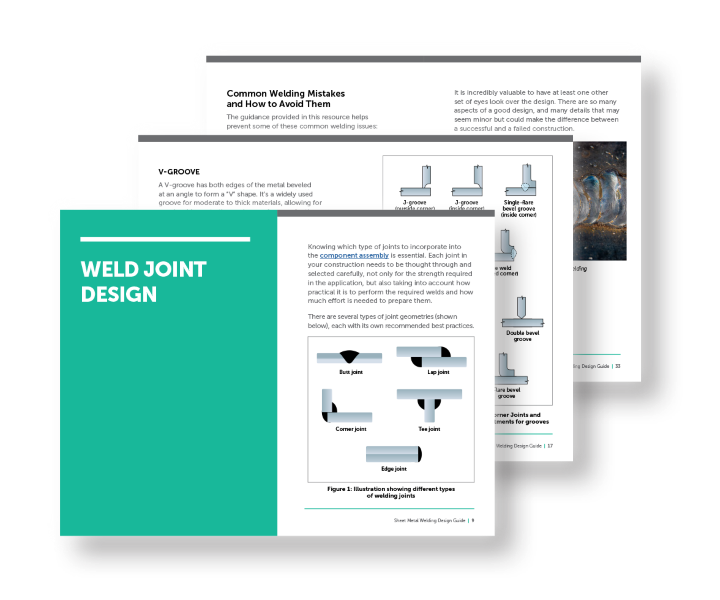Time to read: 5 min
For U.S. machine shops, the last few years have been anything but steady, marked by an unpredictable mix of tailwinds and headwinds. Reshoring and record factory construction have boosted demand, while tariffs and cost inflation continue to tighten margins and blur forecasts. Here’s a clear-cut view of what’s gaining traction, what’s slowing, and how to source smarter in today’s economy.

What is the Definition of a “Machine Shop”?
According to the North American Industry Classification System (NAICS), a machine shop is a facility where materials such as metal, plastic, and composites are cut, shaped, and drilled to create precision parts on a job or order basis.
Recent data shows that machine shops are growing. Reshoring and record factory construction have driven multi-year demand, even as early 2025 PMI readings signaled near-term softness amid tariff uncertainty.
Here is an interesting map of existing CNC shops in the United States
Demand: Tariff Turbulence Swings the Pendulum Away From “Made Here”
Reshoring and FDI created a long runway of demand. U.S. manufacturing jobs tied to reshoring and foreign direct investment reached roughly 244,000 in 2024 alone, bringing total commitments since 2010 to over 2 million. Those announcements translate into real machining demand as new lines tool up and legacy programs localize.1
Factory construction entered record territory. Manufacturing facility construction spending surged to all-time highs from 2024–2025, led by semiconductor, batteries, and electrification—industries with high precision-machining content.2
But short-term orders softened. Throughout 2025, ISM’s Manufacturing PMI sat below the 50 mark, indicating contraction as buyers paused on tariff-risk categories and focused on reducing inventories. August 2025 registered 48.7, with survey comments frequently citing tariff uncertainty and demand concerns.3
What this means for you: The macro tailwind remains in place—new plants still need parts—but monthly order activity will likely be inconsistent. Expect intermittent bursts (pre-tariff pull-ins) followed by lulls as buyers reassess landed costs and supply options.4
Learn more with our 2025 State of Manufacturing and Supply Chain Report.
Supply: Capacity Expanded—Selectively
More physical capacity is coming online. The manufacturing build-out tied to the CHIPS Act (semiconductors), EV supply chains, and general reshoring is fueling new equipment purchases and the launching of greenfield shops near major OEM hubs. As a result, regional bottlenecks for CNC milling, turning, and complex assembly work are loosening.5
Labor remains the constraint. According to BLS data, machine shops continue to pay premium wages to secure experienced machinists and programmers—particularly those skilled in 5-axis work, Swiss machining, and intricate fixturing. As a result, lead times depend more on access to qualified talent than on available floor space.6
Utilization is uneven. Federal Reserve G.17 data shows manufacturing output and capacity utilization hovering below long-run averages in 2025—signaling that many shops have “enough machines, but not enough steady orders.” However, shops equipped with flexible cells and strong CAM automation are faring better..7

Tariffs & Policy: The Big Variable in Price and Sourcing
Recent developments shaping cost structures:
- Section 301 (China) tariff increases in 2024: The U.S. finalized higher tariffs in strategic sectors—EVs, batteries, semiconductors, steel/aluminum products, solar components, and medical goods. Later in 2024, additional hikes were applied to tungsten products, wafers, and polysilicon—materials that sit upstream of many machined components.8
- Section 232 (steel & aluminum): The 2018 tariffs remain a key backdrop; recent Congressional Research Service (CRS) and Hill updates confirm that, aside from periodic adjustments, these measures continue unchanged into 2025.9
- 2025 escalation risks: Mid-2025 market outlooks began pricing in higher metals tariffs (e.g., 50%). Such moves would raise input costs for domestic fabricators and machine shops. Analysts tied much of the summer 2025 PMI softness to uncertainty around tariff policy.10
Measured Impacts:
- The USITC study found that Section 232/301 tariffs increased input costs for downstream manufacturers, trimming output and employment in certain sectors, affecting machine shops through material surcharges and price renegotiations. Independent studies reach similar conclusions, highlighting the cost drag on downstream industries.11
- Bottom line for buyers: Tariffs can lift domestic prices on alloy bar, plate, fasteners, and precision components made with tariffed inputs—even when sourcing domestically—because upstream costs ripple through the market. Budget for volatility in metals surcharges and consider multi-metal design options.11
Pricing & Lead Times: What to Expect
- Materials: Expect periodic spikes in steel, aluminum, tungsten-bearing tooling/parts, and semiconductor-adjacent materials after policy announcements or enforcement actions. Make timely buys when a policy move is signaled; avoid just-in-time purchasing on tariff-exposed alloys.12
- Capacity/queues: With PMI in contraction territory but capital expenditure elevated, many shops have capacity—if your drawings are clean and your BOM is tariff-neutral. However, lead times widen quickly on tight-tolerance, multi-op parts and special alloys.3
- Surcharges: Expect clearer, line-item tariff/material surcharges in quotes; audit them against commodity indexes and policy effective dates.11
CNC Sourcing Playbook for 2026 and Beyond
- Design for tariff resilience. Where feasible, validate second-source alloys (e.g., swapping certain stainless steel or aluminum series) and tolerance relaxations that allow broader supplier pools. (Shops can advise on equivalent machinability and fatigue.)
- Lock options, not just prices. Consider optioned POs (e.g., ±20% quantity windows) tied to policy milestones so you can pull material forward if a tariff hike is announced.
- Distribute sourcing geographically. Pair a local “quick-turn” shop with a national network supplier to hedge regional capacity swings tied to mega-projects such as semis/batteries.5
- Ask for digital proof. Favor shops with in-process metrology and digital traveler systems; they quote faster and hit PPAP/FAI targets with fewer loops—critical when tariffs compress your schedule slack.
- Plan around compliance. For programs with China-origin exclusions or Buy America(n) provisions, get country-of-origin certs and heat lot traceability in the SOW. Policy scrutiny is up.15
Machining Market Outlook (late-2025 to 2027)
- Structural demand stays up: Reshoring projects (appliances, EV supply chain, electrical, medical) continue to localize precision components. Recent plant announcements underscore onshoring momentum.13
- Cyclic noise persists: PMI could oscillate around 50 as tariffs/retaliation risks and election-year policy changes keep OEMs in stop-start mode.3
- Winners: Digitally mature machine shops with flexible cells, multi-axis capability, and program management will take share; buyers who standardize prints, consolidate alloys, and pre-negotiate surcharge logic will see the lowest total landed cost.7
How to Evaluate a U.S. Machine Shop (Quick Checklist)
- Capabilities fit: 5-axis, lights-out, Swiss, hard turning, micro, or large-format.
- Quality stack: AS9100/ISO 13485/ISO 9001, PPAP/FAI readiness, CMM reports, gage R&R.
- Digital maturity: CAM/post sophistication, simulation, tool-life analytics, SPC dashboards.
- Supply chain: Proven raw-material sources, heat-lot traceability, tariff/compliance playbook.
- Scale & resilience: Redundancy (machines & people), preventive maintenance, backup suppliers.
- Commercials: Clear surcharge policy; indexed pricing for long-term agreements.

Need parts machined domestically or internationally? Fictiv offers top quality CNC services with tolerances as tight as ±0.0001 inch and parts manufactured as fast as 1 day.
Sources:
- ReshoreNow.org Reshoring Initiative 2024 Annual Report
- Cencus.gov Construction Spending
- Institute for Supply Management August 2025 ISM Manufacturing PMI Report
- Reuters US manufacturing extends slump; factory employment lowest in 5 years
- FRED Total Construction Spending: Manufacturing in the United States
- Bureau of Labor Statistics May 2023 National Industry-Specific Occupational Employment and Wage Estimates
- Federal Reserve Industrial Production and Capacity Utilization – G.17
- White & Case United States Finalizes Section 301 Tariff Increases on Imports from China
- Congress.gov Expanded Section 232 Tariffs on Steel and Aluminum
- Reuters Trump says he plans to double steel, aluminum tariffs to 50%
- USITC Economic Impact of Section 232 and 301 Tariffs on U.S. Industries
- United States Trade Representative USTR Increases Tariffs Under Section 301 on Tungsten Products, Wafers, and Polysilicon, Concluding the Statutory Four-Year Review
- AP News GE Appliances moves washing machine production from China to Kentucky with $490 million investment










